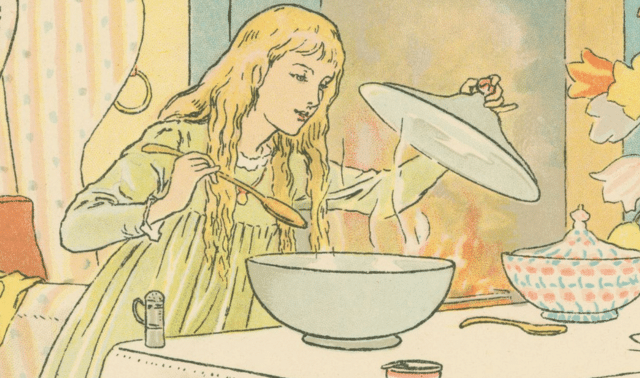Sign up for the Family Tree Newsletter! Plus, you’ll receive our 10 Essential Genealogy Research Forms PDF as a special thank you.
Get Your Free Genealogy Forms
"*" indicates required fields

Do you long to pen the stories behind the names, dates and places you so meticulously record about your ancestors? Yet getting started writing those family stories is arguably one of the most-procrastinated genealogy goals. Thankfully, it’s easier than ever to save and preserve our precious family memories online. Whether you want to document the important moments in your own life or remember the lives of your ancestors, here are some of the latest websites and apps to make writing and sharing family stories a snap.
These tools can help you outline, organize and carry out a family history writing project your relatives will want to read. Many of the tools below are free; some have premium versions or include free trials. Accessible from pretty much anywhere with an internet connection, these handy cross-platform programs (they work on Windows, Mac and most mobile devices) easily sync between computers, tablets and smartphones so you can keep all your notes and stories right at your fingertips.
BlindWrite
Focusing on family history writing can be challenging, especially if you’re
easily distracted by BSOs—those bright shiny objects that tempt you away from the task at hand. You know: A missing death date jumps out at you so you launch a quick search to find it. Three hours later, you find yourself Googling an ancestor in an entirely different family line.
BlindWrite is a free edit-lock tool that blocks out distractions so you can get your thoughts on the screen. It gives you a plain black background where you type what you want to write about and for how long. Then you write and BlindWrite blurs out your words until the timer goes off. To edit and save your work, you’ll need to copy and paste it into another program.
Day One Journal
Many writers like to keep a diary or journal, with entries serving as the outline or even the meat of a memoir. Day One Journal takes the concept virtual. This app is easy to use and works well for jotting down ideas or making a “memory list”—snippets of memories as they come to you (for example, “the day Grandma Elizabeth died,” “when my parents told me they were divorcing,” etc.).
The bonus of keeping a digital journal with Day One is that you can effortlessly search through your entries, email them or sync them across your devices. The app also supports tags and photo uploads. The convenience of this handy app is a great step to move your memoir forward, and makes it easy to turn your notes into a book. It’s available as a Mac App or for iPhone/iPad. Android users might like the similar Day Journal app.
Hemingway Editor 2
Hemingway Editor 2 is a distraction-free writing environment. The app, which advertises that it “makes your writing bold and clear,” doesn’t pick on spelling or grammar issues, but rather uses color-coding to point out common writing mistakes you might consider changing, such as hard-to-read sentences and passive voice. You’ll get a count of the paragraphs, sentences, words, and characters in your text, as well as a readability grade level—the “lowest educational level needed to understand your text.” To use the free web version, just delete the text that shows up on the screen and start typing your own, or copy and paste from another document into the edit screen. With the desktop version for Mac or Windows ($9.99), you also can edit offline and save text as a Markdown (.MD) file.
Scapple
When doing genealogy research or working on a writing project, you might find yourself grabbing for a pen and sheet of paper, sticky note or even a napkin, scribbling down ideas and drawing lines to connect thoughts. In the business world, this process is commonly known as mind mapping. If you have those research “light-bulb” or “creative muse” moments, you’ll want to get them down quickly so you don’t forget them. Scapple by Literature and Latte (Windows or Mac, $14.99) is an easy-to-use tool that lets you write notes on its virtual paper and create connections between them. It works freehand and you can color-code items and even add images. You can export your creation as an image or PDF file to import into other programs, including Scrivener (see below). There’s no version for smartphones or tablets.
Scrivener
Scrivener is a multifaceted word processor and project management tool, also from Literature and Latte, that can help you plot, organize and write your family history. Scrivener has many free templates for different types of writing projects. You can adapt them to write a family history book or novel, compose ancestor profiles, outline articles and blog posts, collect family stories, develop presentations and courses, storyboard a family photo project, preserve and share family recipes, and much more. There’s a learning curve, but Scrivener’s excellent tutorials, manuals, blog and online forum will help get you up and writing. The program costs $45 USD for Mac OSX; $40 for Windows. An iOS app is in the works. There’s also a free 30-day trial (that’s 30 days of actual use, not calendar days).
Write.app
This free web-based program and app offers a visually uncluttered space to write in the cloud or through its Android or iOS app, without the commands and formatting found in traditional word processing software. It’s great for first drafts, journaling or typing quick research notes that you just need to get down in a hurry. You can set notes as public or private, organize them into notebooks and save them as .TXT files to your computer.
A premium account ($1.99) lets you get upgrades and adds features such as the ability to create notes by emailing them. It takes only a few minutes to set up an online notebook by choosing a username, entering your email address and picking a password.
Write or Die 2
For serious family history writers who need more extreme motivation, Write or Die 2 by Dr. Wicked works on a consequences-and-rewards system: You set goals for word count and time, and choose the level of punishment for failing to meet them. Then the program might, for example, simply issue a warning, cover your screen with creepy spiders or “disemvowel” your copy until you get back to work.
What’s that? You say you respond better to positive reinforcement? Stimulus mode provides pleasant sounds and a beach or forest in the background. You also can challenge other writers with “wordWar” games. It’s free to try the web version (you can save your work in a .TXT file) and join games. A Pro account lets you host games, name your projects and get your writing stats.
Family History Storytelling Websites
HistoryLines
This free website creates a life sketch incorporating historical and cultural background for any ancestor on your family tree.
Features
- The clickable Google map lets you see where your ancestor lived in proximity to events of historical significance.
- Import a FamilySearch tree or GEDCOM file, or enter an ancestor’s name and life dates.
- Add personal events and family members to the timeline.
Tip: Customize your stories with memories, events and photos. Then share them on social media, embed them on your blog or print them to pass out at a family gathering.
StoryWorth
An online subscription service to preserve and share stories, this app won the grand prize at the 2015 RootsTech Innovator Showdown.
Features
- Email weekly prompts to relatives asking a question about their lives.
- Family members record responses by email or phone.
- To record audio, Storyworth will call a person and ask him to record the story, just like a voicemail.
Tip: Everything on StoryWorth is private by default and you have full control over who can see your family’s stories.
Treelines
Use your family tree as a starting point to create a timeline with this free online tool. Add memories, photographs, anecdotes and more.
Features
- Upload a GEDCOM or start your family tree from scratch using the tree builder.
- Add details about the people in your tree through photos or text.
- Tag pages with names, dates and places.
- See a timeline for key events in the person’s life.
Tip: For optimal impact, keep each of your pages short with just a few sentences; if you need to say more, start a new page.
A version of this article appeared in the July/August 2016 issue of Family Tree Magazine.




